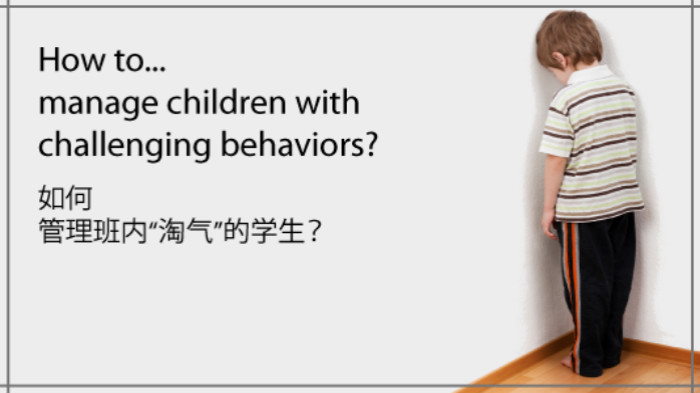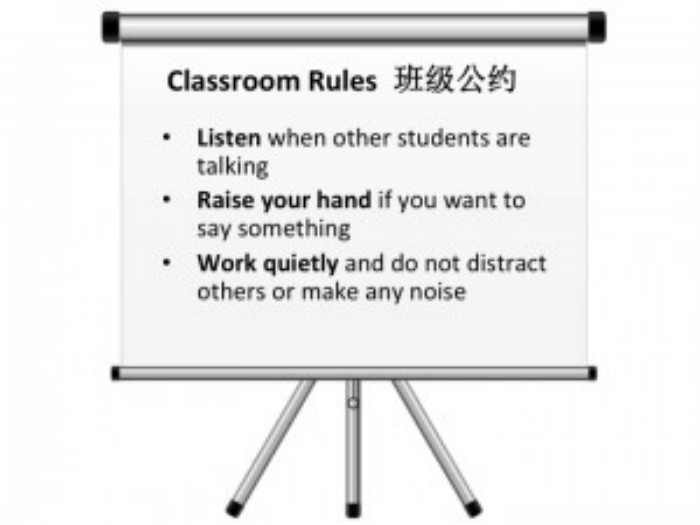Tips on Classroom Management: How to manage children with challenging behaviors?
Time:2017-03-28 Source:

In the past few years, I have been teaching different groups of young children indifferent language classes. I have encountered several pedagogical problems and one of them is how to manage childrenwith challenging behaviors. They do not listen to me, and they keep distractingothers and making noises.
Recently I have tried and developed several strategies to deal with those “naughty”children and they all worked very well. Instead of messing around, the kids listened to me, respected others, and wanted to participate. Below are thestrategies that I have developed, and I hope that they could benefit you as well.
1. Set up classroom rules and tell the students your expectations at day one.

You might have something similar or different, but you need to have some rules.This step is very important as kids need to know how their teacher wants them to behave and the consequence if they do not follow the rules. Keep yourclassroom rules and put them on theboard every time you have the class. When students break the rules, we couldpoint to the board, tell the misbehaving kid, and give them our “punishment”.
2. Show your respect and care first, notcriticize them immediately.

We want our students to know that we care about them and want to help them, especiallyfor the students with challenging behaviors. For example, if a kid keeps hishead down and not listening to us, the first thing we should do is walking tohim, looking at his eyes gently and asking if he is okay. Sometimes studentsmight be sick and thus feel uncomfortable talking or participating in classactivities. We need to let our students know that we care about them and wantthem to feel secured in class. Comforts and love keep anxious kids calm andsecured.
3. Build “model” students and invite others tofollow.

Apart from“naughty” students in the class, we should not forget about the obedientstudents. We could emphasize what the good students are doing as a model for the misbehaving ones. For example, if a student does not focus on his study andkeeps playing, the teacher may pick a good student (e.g. Alice) and begin narrating, “Oh, Alice really did a good job! Look at her notes on her book, thelovely chart she drew, and the beautiful writing! Alice is a good student.”Students may pay attention to the teacher’s narrative and begin to think aboutthe way they behave. They would notice the difference and adjust themselves because they also want to be the model that the teacher could pick and praise.Believe it or not, this positive narrative sometimes works even better than criticizing them!
4. Give them a warning, provide them choicesand let them think for a while.

If the kids still do not listen to us and keep distracting others, we could bring themto the back of the classroom and talk to them. We need to give them a warning and tell them what kind of punishment they will get if they continuedistracting others. And then we need to give them options and let them think alone.
One day in my Chinese class, a four-year-old kid started to cry and push otherstudents’ desks. I warned him that his behavior was not acceptable, but he did not listen. After a few minutes, other students could not follow me because hekept distracting others. I walked to the crying kid and let him sit alone. Then I said to him, “You could stay here and think about what you did, or you couldcome join us and learn some interesting things together with us. It’s your choice. You don’t need to answer me right now. You can think about it for twominutes. When you are ready, you can raise your hand and tell me your choices. Okay?” The kid keeps crying, but he stopped about three minutes later. I keptteaching and playing games with other students. The kid looked at me and keptsilent. Then he walked back to his seat and opened his book! Finally he joinedus and finished the rest of the class as a very good child!
About the author
